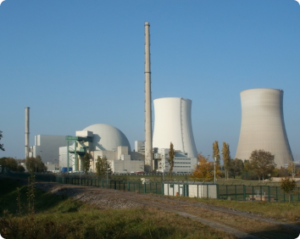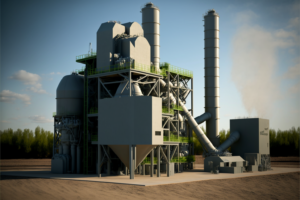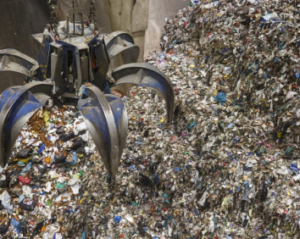Introduction
Waste-to-energy (WtE) technology involves converting waste materials into energy sources through various processes. With the ever-increasing amount of waste produced globally, it has become increasingly important to explore sustainable waste management options. This blog post provides an overview of WtE technology, its benefits, challenges, controversies, and potential future prospects.
Sustainable Waste Management is Inevitable
Waste generation is on the rise, with consequences such as pollution, deforestation, habitat loss, and climate change. The traditional methods of waste disposal, such as landfilling and incineration, have posed significant environmental challenges. Adopting sustainable waste management practices is urgent to mitigate these consequences and promote a cleaner and healthier environment. Escalating waste generation has resulted in so many incidents and consequences.
The world is currently witnessing a significant increase in waste generation. This escalating trend has severe consequences for our environment, ecosystems, and public health. As the global population continues to grow, so does the amount of waste we produce. If left unaddressed, this rapid increase in waste generation will worsen over time, posing greater challenges for waste management.
Traditional waste disposal methods, such as open dumping and burning, have been widely used in the past. However, these practices have proven to be highly detrimental to the environment. Open dumping of waste leads to the release of hazardous chemicals and pollutants into the soil and water bodies, causing long-term damage to ecosystems. Burning waste, especially plastics, releases toxic gases and contributes to air pollution and climate change.
The urgency of adopting sustainable waste management practices cannot be overstated. Given the adverse effects of traditional waste disposal methods, it is crucial to adopt sustainable waste management practices. Sustainable waste management focuses on minimizing waste generation, maximizing resource recovery, and promoting environmentally friendly disposal methods. By implementing these practices, we can achieve several benefits:
Environmental Conservation: Sustainable waste management reduces pollution and prevents harmful substances from contaminating our air, water, and soil. This helps safeguard ecosystems and biodiversity, preserving the natural abundance of the planet.
Resource Efficiency: Through methods such as recycling, composting, and energy recovery, sustainable waste management allows us to extract value from waste materials. This not only reduces the pressure on raw material extraction but also conserves energy and reduces greenhouse gas emissions.
Public Health and Hygiene: Proper waste management practices prevent the spread of diseases and pests that thrive in waste dumps. By minimizing exposure to hazardous waste, we can protect public health and improve overall hygiene within communities.
Circular Economy: Sustainable waste management plays a crucial role in transitioning to a circular economy, where resources are used efficiently and waste is minimized. By recycling and reusing materials, we can reduce the demand for virgin resources and promote a more sustainable and responsible approach to resource management.
The escalation of waste generation and the environmental challenges posed by traditional waste disposal methods necessitate urgent action towards sustainable waste management. By implementing sustainable practices, we can mitigate the negative impacts of waste on the environment, conserve resources, improve public health, and move towards a circular economy. It is essential for individuals, businesses, and governments to work together towards a more sustainable future.
Waste-to-Energy Technology and It’s Benefits
The WtE process involves converting waste materials into heat or electricity through various conversion technologies like incineration, pyrolysis, gasification, and anaerobic digestion. It can handle various types of waste such as municipal solid, agricultural, and industrial wastes, and offers several benefits such as reducing landfills, mitigating greenhouse gas emissions, and generating renewable energy.
WtE technology helps reduce the volume of waste in landfills and associated environmental issues such as pollution, habitat loss, and greenhouse gas emissions. It is an alternative to fossil fuels and can help mitigate climate change through reduced emissions. WtE can also recover resources from waste, contributing to a circular economy.
Successful Waste-to-Energy Implementations
Many countries and municipalities have implemented successful WtE projects. For example, Sweden generates over a third of its electricity from WtE, and Japan recycles most of its waste through sustainable methods like incineration and anaerobic digestion. Comparing environmental impact studies of WtE with other waste management methods has shown that WtE is highly sustainable.
Waste-to-Energy Technology is not Without its Challenges
Public perception, health and safety concerns, and regulatory hurdles pose significant challenges to WtE adoption. The concerns include the release of pollutants during incineration and the challenge of handling toxic materials. Addressing these concerns requires investing in advanced technologies and policy frameworks.
Waste-to-Energy (WtE) technology, which converts waste into energy through processes like incineration and gasification, has garnered attention as a potential solution for waste management. However, this technology is not without challenges and controversies.
Let’s examine some of the key issues:
One of the major challenges faced by Waste-to-Energy technology is public perception and misconceptions regarding its potential environmental and health impacts. Many people are concerned about air pollution, emissions of harmful pollutants, and the release of toxic ash into the environment. However, it is important to note that modern WtE facilities are subject to strict emission control regulations, ensuring that any potential environmental risks are minimized.
To overcome public perception challenges, it is crucial to provide accurate information and education to the public about the safety and effectiveness of waste-to-energy technologies. Transparent communication and public engagement can help address misconceptions and build trust.
Regulatory Hurdles and Policy Support
Regulatory hurdles and lack of policy support can also pose challenges to the widespread adoption of waste-to-energy technology. Obtaining permits and complying with environmental regulations can be time-consuming and expensive. In some cases, outdated regulations may hinder the development and implementation of WtE projects.
To encourage the adoption of waste-to-energy technology, governments need to establish clear and supportive policies and regulations. This includes streamlining the permitting process, providing incentives for companies to invest in WtE projects, and setting strict emission standards that protect the environment and public health.
Addressing Health and Safety Concerns
The health and safety concerns surrounding waste-to-energy technology are another area of controversy. People worry about the potential health risks associated with the emissions and residues produced during the WtE process. While modern facilities have advanced emission control technologies in place, it is essential to continuously monitor and ensure compliance with stringent safety regulations.
To address health and safety concerns, it is crucial to conduct comprehensive risk assessments and implement strict monitoring protocols. Regular inspections, appropriate maintenance, and adherence to safety protocols can help mitigate any potential risks and ensure the protection of workers and nearby communities.
While Waste-to-Energy technology holds promise as a solution for waste management, it faces challenges and controversies that need to be addressed. By improving public perception through education, establishing supportive policies and regulations, and addressing health and safety concerns, we can harness the potential of WtE technology while ensuring environmental protection and public well-being. It is important for stakeholders to work together, fostering dialogue and transparency, to find sustainable and socially acceptable solutions for waste management.
Technological Advancements and Feasibility of Waste-to-Energy
Incorporating renewable energy components such as solar and wind in WtE facilities is a new trend. AI and automation can optimize WtE processes, increasing efficiency while reducing environmental impact. The cost of WtE is crucial in determining the feasibility of projects. Government incentives, financing options, and evaluating the return on investment are all critical factors in determining the financial viability of WtE projects.
Aligning waste management practices with a circular economy is essential for promoting sustainable development. Combining WtE technology with recycling initiatives can create synergies, optimize resources, and promote sustainable waste management practices.
Future Prospects and Conclusion
WtE technology is a promising sustainable solution for managing waste while generating renewable energy. Governments, industries, and communities must invest in developing innovative solutions to overcome the challenges and controversies surrounding WtE adoption. By doing so, we can build a cleaner, healthier, and more sustainable future.





Recent Comments